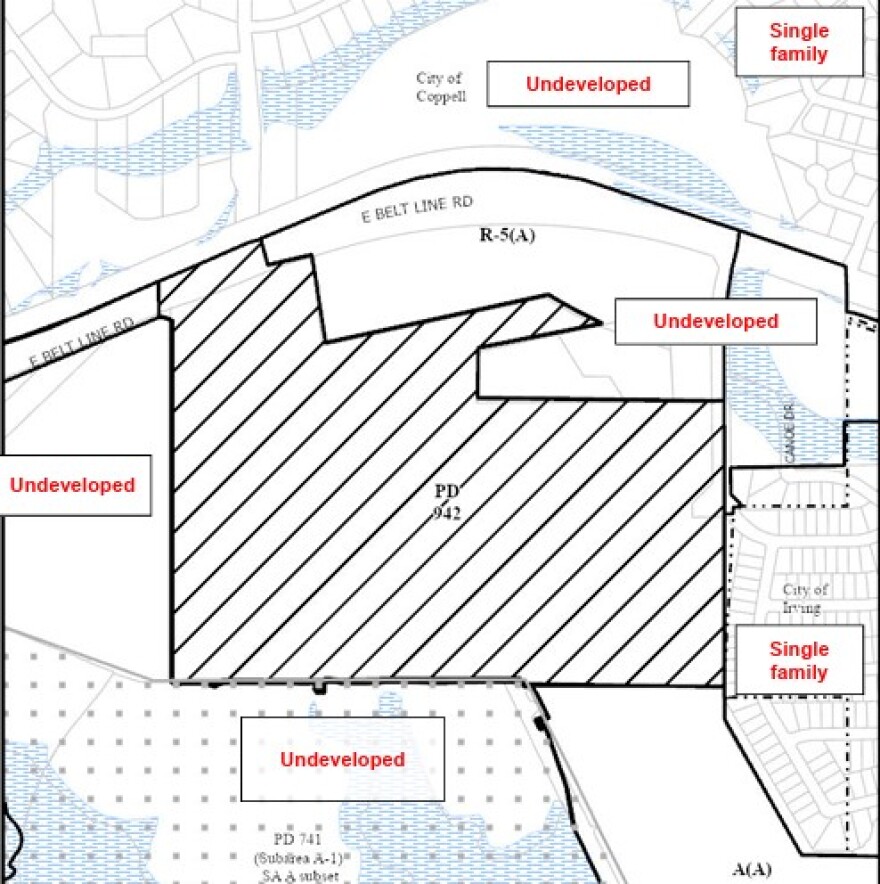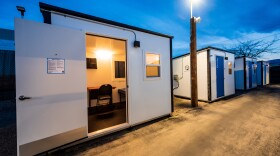Oncor will be able to construct a 200-foot communication tower near a neighborhood at the border of Dallas and Irving — despite pushback from residents in the area.
Dozens of residents in Irving's South Haven Residential Community spoke against the plan during Wednesday's Dallas City Council meeting, citing concern over their health and wellbeing.
While their neighborhood is in Irving, the site of the tower — located south of East Belt Line Road — is in Dallas.
A total of 94 property owners were notified of the proposal. As of Friday, 64 has replied in opposition to the plan.
South Haven residents like Raghavendra Jakkani said the tower would be a safety hazard to a nearby children's park and worried about potential voltage from the tower lines.
Jakkani suggested a 600-foot buffer between the tower and the neighborhood instead of close to 300 feet, which was ultimately approved.
Nikhil Nelluri, another member of the tightknit South Haven community, said he found it hard to believe that Oncor could not find an alternative location for the tower.
"Whom should we turn to and what must we ask when reason and community concerns seem to be overlooked?" Nelluri asked the council.

The site near South Haven has been a utility site since at least the late 1950s, said Jennifer Hiromoto, a zoning consultant with Oncor.
There's is existing communications tower equipment on the water tower to the left side of the lot, which is farthest from the neighborhood. Hiromoto said the stand-alone 200-foot tower will replace that equipment and provide for critical communication needs within Oncor's systems. She also added that it is not a cell tower.
"There's literally no other place for this tower to go and be safe," Hiromoto said. "We did keep the residential uses in mind, but the tower does not change the fundamental use of the property."
The City Plan and Zoning Commission approved the motion to send to council in August. Oncor proposed the tower for internal communication use and to increase the allowed height on the lot from 150 feet to 200 feet.
A city attorney told the plan and zoning commission during its August meeting that the Telecommunications Act of 1996 prohibits local governments from regulating wireless service facilities as long as they comply with federal mandates.
Because of that act, the City Council decided the case as a land use issue.
"This decision needs to be based solely on land use," Council Member Adam Bazaldua said. "And when considering land use and not emotion, I am fully supportive of us approving this."
He added that the residents' concerns were not issues the city could base decisions on since the proposal followed federal law.
Council Member Cara Mendelsohn spoke in favor of the tower as well. She cited other cities, like Plano and Richardson, that made zoning decisions in favor of their residents despite Dallas residents living near the affected zoning change.
"I'm just saying, when you live on the border, you lose your say," Mendelsohn said. "And that's a difficult thing for me to sit here and tell you to your face, but it's the truth."
At the end of the day, Mendelsohn said Dallas residents need electric reliability. And the communication tower is a fact of urban life.
Got a tip? Email Megan Cardona at mcardona@kera.org.
KERA News is made possible through the generosity of our members. If you find this reporting valuable, consider making a tax-deductible gift today. Thank you!





